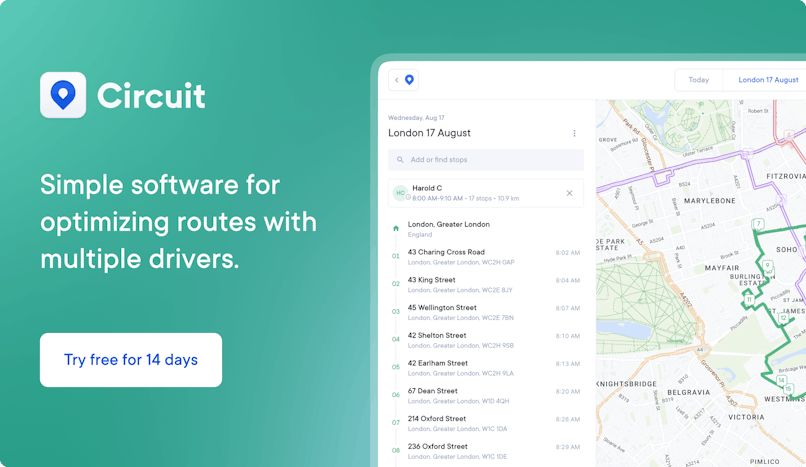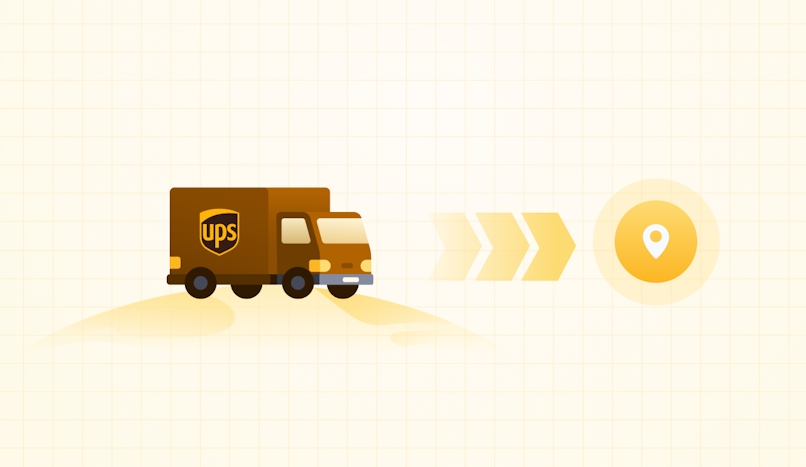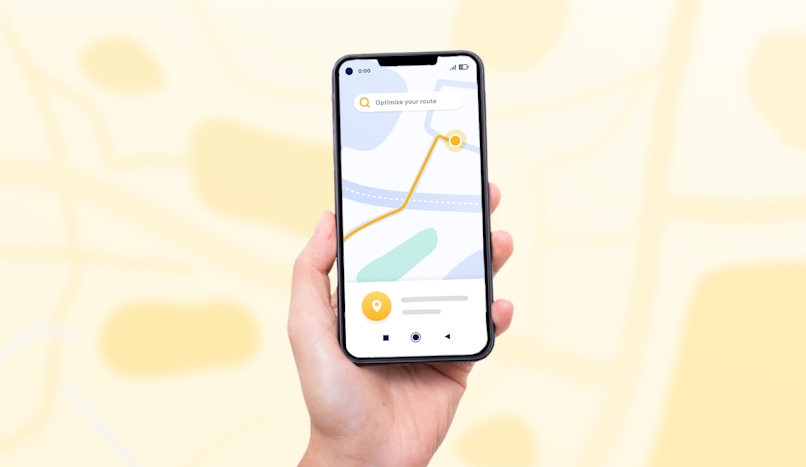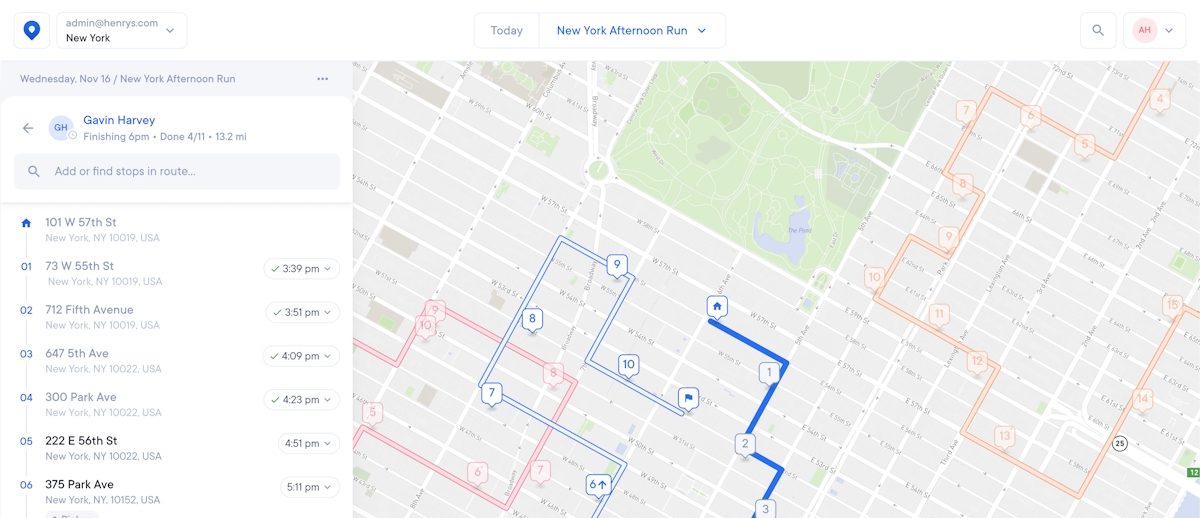Why UPS Drivers Don’t Make Left Turns (and Why You Should Copy)
UPS trucks don’t make left-hand turns. Learn more about the right-hand turn policy and how it helps with saving time and reducing emissions.

Want to avoid left-hand turns? Get the most efficient routes for your delivery drivers with Circuit for Teams.
Ninety percent of the turns made by the United Parcel Service (UPS) delivery trucks are right turns.
Their strategy is simple: Avoid left turns as often as possible.
Why?
UPS claims its right-turn-only policy is instrumental in emitting 20,000 tons less carbon dioxide, using 10 million gallons less fuel, and delivering 350,000 more packages every year.
Left turns are seen as inefficient and dangerous.
In fact, based on one study, they’re three times more likely than right turns to cause a deadly crash involving a pedestrian in New York City.
In the United States — where we drive on the right side of the road — left turns involve crossing a lane of oncoming traffic, and this can be dangerous in high-traffic areas and busy intersections.
Below, I’ll tell you everything you need to know about why UPS trucks don’t turn left, the benefits of their left-hand turn policy, and how to optimize your delivery routes for faster delivery.

How does UPS handle driver routing?
UPS uses route planning technology to manage its drivers.
The company uses technology to break down deliveries into smaller hubs, which have multiple stops and routes for drivers.
UPS also uses GPS tracking to monitor driver performance in real time.
This allows them to monitor the status of each delivery and identify any areas where drivers can improve their performance.
UPS has also invested in autonomous delivery vehicles, which are expected to increase efficiency and further reduce costs.
Reasons UPS limits left turns
In 1959, mathematician George Dantzig introduced the truck dispatching problem with his research.
Essentially, it’s a way of using data analysis to optimize routes and address the vehicle routing problem.
Sometimes called the “traveling salesman problem,” it asks how to reach as many destinations as possible while keeping your operating costs low.
Optimal routing is usually determined by the length of the route.
But, with over 100,000 delivery vehicles worldwide, UPS takes the vehicle routing problem to a new level.
They’re not just delivering eggs and milk bottles like they were in Dantzig’s time.
It’s less about finding the shortest route on paper or screen. They look at the big picture — and that’s what works best in the real world.
UPS’s solution?
Getting rid of left-hand turns.
Let’s take a look at the benefits of the UPS vehicle routing solution below:
Save fuel
Transportation and fuel costs are steep.
The price of regular gas rose 49 percent between January and June 2022.
If UPS isn’t following the shortest route, aren’t they just using more gas?
In actuality, longer routes don’t always waste fuel.
The popular TV show Mythbusters put this idea to the test. They discovered that the policy of only turning right doesn’t impact fuel consumption negatively.
On the contrary, it saves fuel by helping drivers avoid long waits at traffic lights or idling — since left-turning traffic usually has to wait for oncoming traffic to slow down before drivers can get through an intersection.
Reduce crashes
Delivery and truck drivers have a lot of responsibility.
They have to safely handle and deliver packages, and even more importantly, keep themselves and others safe while they drive.
The UPS right-hand turn policy helps reduce crash risks, especially in busy cities with congested roads.
Turning into oncoming traffic at a junction can be difficult and dangerous.
Right-hand turns are safer because they reduce the risk of a head-on collision with another vehicle or pedestrian.
A National Highway Traffic Safety Administration (NHTSA) analysis revealed that around 53 percent of cross-path crashes involve left-hand turns.
In big cities like New York City, with heavy foot traffic, left turns pose a serious risk for bicyclists and pedestrians.
An NYC Department of Transportation (DOT) study made the following discoveries:
- 108 pedestrians and bicyclists were killed by left-turning vehicles between 2010 and 2014.
- Seniors had a higher risk of serious injury and death when struck by left-turning vehicles.
- At 18 percent of NYC intersections, left-turn injuries occurred.
- 70 percent of injuries took place on one-way streets.
Statistics like this play a big part in why only 10 percent of UPS turns are left-hand turns.
Save time
How can a longer route save time?
Graham Kendall, professor of computer science at the University of Nottingham in the UK, researched the algorithms to understand why UPS chose this approach.
He discovered that saving time was actually one of the main outcomes UPS was aiming for.
The average American spends 17,600 minutes driving each year and 3,520 minutes at red lights.
That’s a lot of time in the car.
Now consider a delivery driver who works 40-hour workweeks. They face a lot more driving time than the average person.
The UPS eliminates left turns partially in an attempt to reduce driving time and avoid idling at red lights.
Although UPS routes may technically be longer sometimes, almost exclusively making right-hand turns means driving time can be faster.
After all, drivers are allowed to turn right on red as long as they come to a complete stop first, there’s no sign prohibiting it, and the way is clear.
This is legal in all US states, although New York City does present some exceptions.
Reduce emissions
Carbon emissions have a big impact on the environment and are a major factor in climate change.
With a growing number of delivery vehicles on the road, emissions are growing, and traffic is only getting worse.
Idling creates pollution and costs money by wasting gas.
Reducing travel time doesn’t just mean you’ll save money on fuel — it also means you’ll be reducing emissions.
UPS claims they produce 20,000 tons less carbon dioxide thanks to their policy.

How do you solve the vehicle routing problem?
Vehicle routing problem is a type of optimization problem.
First introduced by George Dantzig — who we mentioned earlier — the vehicle routing problem is the “optimal set of routes” for a team of vehicles to follow when delivering to their customers.
Optimization is used to find the most efficient way to route delivery vehicles. It allows them to make many stops in the shortest amount of time.
The goal is to minimize the cost or distance traveled, and other factors like fuel consumption and travel time.
Optimization can be applied to many kinds of delivery, from local milk delivery to large-scale freight delivery moving goods across the globe.
The best solutions use an algorithm that takes into account multiple factors, such as the ones listed below:
- Customer demand
- Delivery routes
- Cost of fuel and transportation
- Traffic patterns
- Environmental concerns
UPS found its solution with 90 percent right turns.
If you run a delivery business and manage multiple delivery vehicles and drivers, you need an efficient solution to the vehicle routing problem.
The best way to solve this problem is by using a route optimization tool. Route optimization tools use algorithms to come up with optimal routes for your vehicles.
Using software like this, you can quickly identify efficient routes, reduce costs and travel time, and save fuel.

How can you optimize your own delivery routes?
You can optimize the routes you use for your own delivery business by using route optimization software.
Routing software helps plan routes quickly and efficiently, taking into account factors like distance, traffic patterns, drop-off locations, and delivery times.
It can also help you reduce costs by finding the most fuel-efficient routes and reducing the amount of time your drivers spend on the road.
Save time and money with Circuit for Teams
Circuit for Teams is a powerful route optimization software that can help your delivery business become more efficient and cost-effective.
It uses analytics to plan routes, track drivers in real time, reduce detours, and make your delivery process more efficient overall.
Easily manage multiple drivers, collect proof of delivery, and send automatic customer notifications so your customers always know when their packages are arriving.
Reduce your delivery costs by 20 percent by giving your drivers access to the world’s most popular driver app paired with a world-class delivery management platform.
Circuit for teams can even help you simplify your payroll process. Learn how Burd Eggs saves 30+ hours a week in payroll.





